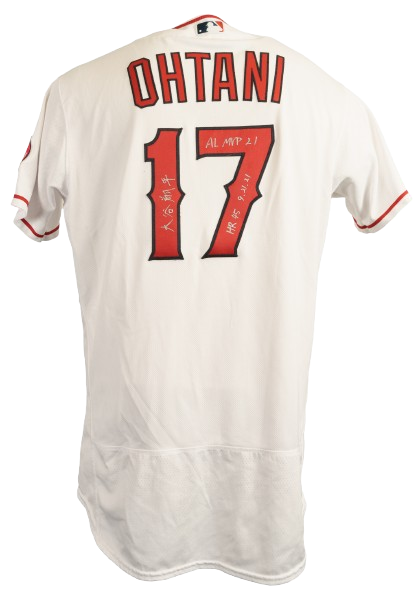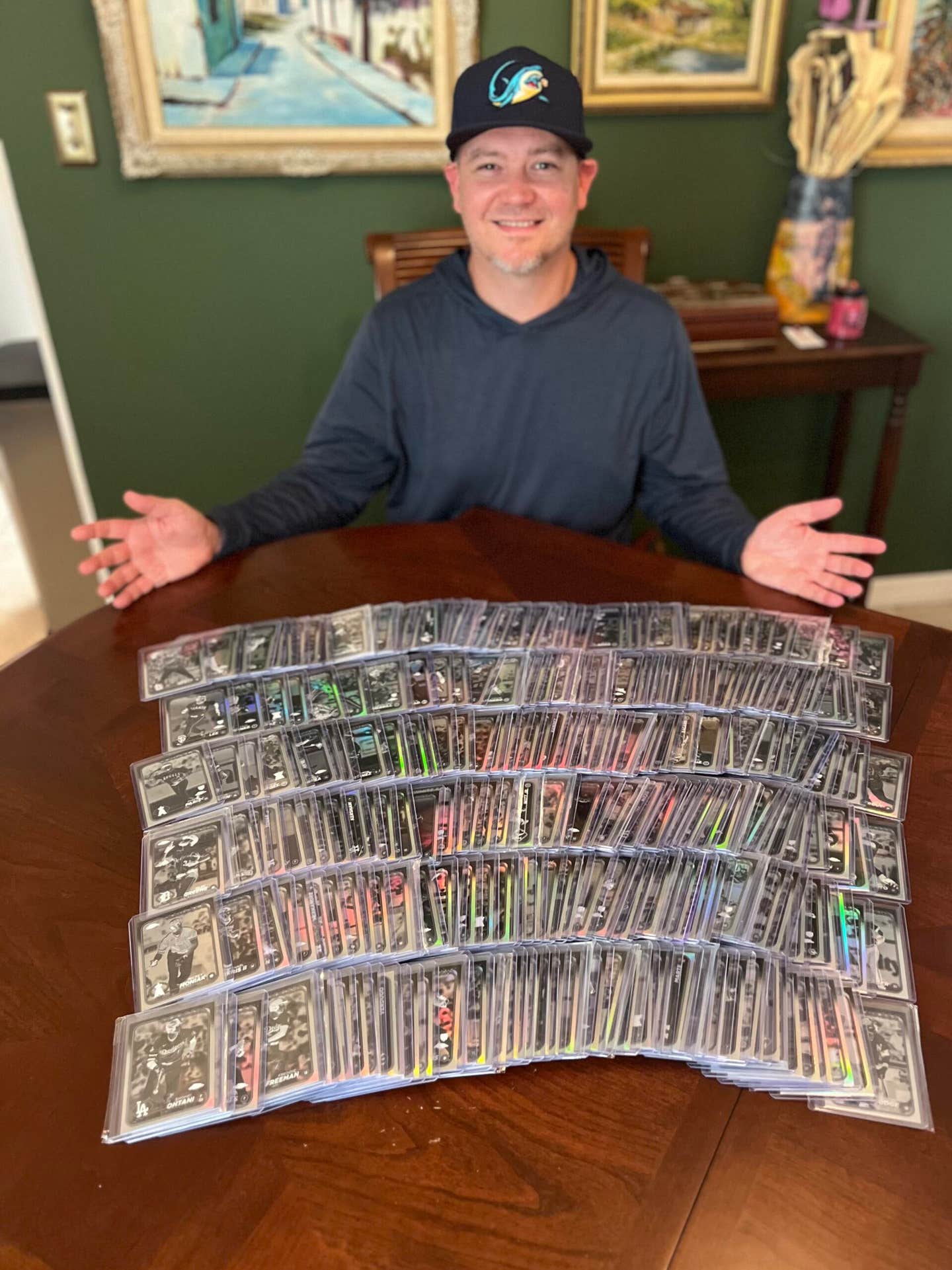Collector Stories
Gar Miller spent 68 years collecting what came his way
By George Vrechek
Gar Miller’s name made it into a hobby publication in 1958 when Bob Jaspersen published his “Who’s Who Directory of Collectors.” Miller’s name continued to surface in the hobby.
He was in Irv Lerner’s 1970 ”Who’s Who in Collecting.” In 1973 he published his own book on collecting baseball cards. He has been mentioned in many stories about hobby pioneers, and his name still appears in just about every issue of Sports Collectors Digest advertising, “Three million cards and autographs –now available…Buying/selling since 1953.”
Who is Gar Miller, how has he managed to not run out of cards, and why hasn’t he been spotted at shows? Let’s ask.
T205 Cobb went for 20 cents
Miller’s story starts as an eleven-year-old collecting 1949 Bowmans in New Jersey, across the river from Philadelphia. He enjoyed sports and liked the cards. As his friends gave up their collections, Miller was there to provide their cards with a new home. After his father’s death in 1953, he was given a stack of his father’s tobacco cards which included a T206 Cobb. He started to sell a few cards to finance buying more cards.
Unfortunately he sold some of the T206s including the Cobb for 20 cents each.
As he continued in the hobby he learned more about values and to not give things away. He found ads by Wirt Gammon in Grandstand Manager and bought through the mail. He ran ads to buy cards in Charles Brooks’ The Sport Hobbyist while still in high school. As described in the 1958 Who’s Who, by the time he finished high school he was collecting all sports “guides, magazines, gum cards, autographs, photographs, scrapbooks, also baseball yearbooks.”
Pitching for Rutgers
At Rutgers University-Camden he excelled in playing both baseball and basketball. The Rutgers Today publication reported: “The standout pitcher held the school’s all-time baseball program record for career victories for 45 years before it was broken in 2005.
Miller still holds the career mark with 19 complete games and ranks high on the career list in innings pitched, strikeouts and shutouts 50 years after he graduated.
“Miller was inducted into the Rutgers-Camden Athletics Hall of Fame in 2005. With Miller on the mound, the Rutgers-Camden baseball team shared the Delaware Valley Conference championship in 1957 and won it outright in 1959 and 1960. Miller also played basketball for four seasons.”
Writing career started in the Army
Miller’s enjoyment of sports continued, and it fueled his collecting when others had lost interest. After college, he worked as a sportswriter for the Atlantic City Press and even wrote an article about collecting. In 1961 he was drafted into the Army and was fortunate to be stationed in New York City where he pursued his other interest, which was writing.
He wrote for Army publications. A soldier of the same age was his boss, fellow sports enthusiast and writer John J. Curley. Miller became good friends with Curley who went from being a recruiting publicity officer in the Army to heading the Gannett News Service and later becoming the first editor of USA Today. Between 1963 and 1965 Miller worked as a civilian in New York contacting celebrities, through their agents, to record messages for radio play promoting the U.S. Army. In this capacity Miller met Jackie Robinson and other celebrities.
In 1965 Miller moved back to South Jersey, where he married his long-time girlfriend, Rhoda Ann Blackburne, started a family and began a career editing publications for Atlantic Richfield Company. He had tried to sell off his collection earlier, but was unsuccessful. A visit with Irv Lerner in Philadelphia in the late 1960s refueled his collecting interest, and he jumped back in the hobby with a passion.
The early shows
The hobby was just starting to get publicity. Miller helped that movement by contacting newspapers and providing both questions and answers about sports collecting that were published in 15 papers. Miller ran ads to buy collections. He remembers paying $100 for a large collection of 1930s cards. He bought autographs, programs, scorecards, yearbooks, photos, and all sports cards. He had tables at some of the earliest shows including one in New York City in the early 1970s, when he shared a small room with Bill White and Don LePore. He traveled to Jim Nowell’s house in California. Nowell had hosted the first wide-scale gathering of hobbyists in 1970.
When Miller took a table at the early shows, he let buyers thumb through stacks of cards including 1952 Topps high numbers. At the end of the first day of a two-day show, everyone just threw a sheet over their table and left their cards in the hotel meeting rooms.
Some of the prices at these shows were astounding. Miller recalled, “At one of the first Spring Garden College shows I did in the early to mid-70s, I sold two 1952 Mantles for $10 each – or the first show there that I made the news by bidding a then astounding price of $850 for a 1952 Topps set. What was I thinking?”
1973 hobby book
Miller felt that there was increased awareness of the hobby, but that information about prices was missing. He decided to write a book that would include pricing information, and titled it “Baseball Cards, Everything you always wanted to know, but didn’t know who to ask.” In two weeks in 1973 he wrote and printed 500 copies of the book. It was only 20 pages, but it included information on the history of card issues and the hobby plus advice on collecting that holds up well 44 years later.
The Los Angeles library system alone purchased 68 books for each of their branch libraries. He sold books to SCD’s John Stommen who used them as an incentive to give away to new subscribers.
Buying consortiums
By the 1970s, buyers roamed the country acquiring collections for resale. Many of these buyers were turning into full-time dealers who needed to sell the cards they were buying. Miller was in the fortunate situation of having a good, full-time job that allowed him to travel on weekends to buy cards that he didn’t need to sell. He recalls, “I didn’t have a game plan. I just took what came my way.” What came his way were a lot of cards.
He would team with other buyers who might come into a city at the same time. For example, 12 buyers hit Boston on one weekend. The group included Eric Lange, Jay Barry, Irv Lerner, John Rumierz, Jim Beckett and Pat Quinn. Lange was with the Cleveland Press and generally composed the buy ads and planned trips. It wasn’t unusual to come away from these trips with 1952 Topps high numbers and Bowman sets for everyone.
Miller recalled, “On the Boston trip, the 12 of us were at six locations (two to a room) and at the end we met at one place and divided the ‘spoils’ and the costs.”
While there was a lot of negotiating with card owners, there must have been some interesting deliberations when the consortium of buyers met to divide the cardboard. This is probably when the true value of the cards developed, and when some buyers made better choices or arguments than others. Who wanted what cards? How soon could they be sold and for how much? What were the fair values to divide? There were stars, commons, mint cards and junk. Was Mantle worth more than Mays or Ted Williams?
Miller remembers “on one trip having to make a choice as we divvied up some prize items between a ’51 Blue Back set and a ‘53 color set – and I foolishly chose the ‘51 set! I did it because I didn’t have one.” Surveillance camera footage from these hotel room gatherings would be interesting viewing today.
The Wagner in New York
Miller’s friend Eric Lange recalled one trip to Long Island in the mid-1970s when Miller, John Rumierz and Lange were all together. “A man called us and said he had a Wagner card. He was on the far end of Long Island from us. I said I would stay back and that Gar should go. About 9 or 10 at night, he came back with a T206 Wagner.”
Miller added, “Because there were other non-tobacco Wagners, I was cynical. I went out to the man’s house and bought it. I verified it was the real deal and asked what he wanted for it and paid him that exact amount. No haggling. When I got back, we each bid on it, and John went home with the treasure.” They split the rest of the purchases including Mantle cards in a way to even things out. Lange joked that ever since then, “Anytime they go out to eat with Rumierz, he pays.”
Other trips
On a Seattle trip, they bought more stuff than could fit into their suitcases, and so they left some of the programs and books behind. If cards were too new, like from the mid-1960s, they wouldn’t bother buying them.
Miller recalled, “You couldn’t really tell what a seller might have. An older fellow might come in with cards that were purchased in the last few years, whereas a young kid might have a box of his father’s or grandfather’s cards. One guy came in with quantities of U.S. Caramel cards including Ruth and Gehrig, all in nice condition. He really didn’t want to sell. He was just there to tease us.”
Buying and selling
He ran ads in The Sporting News, appeared on radio shows, talked to Kiwanis and Rotary Clubs and generally helped raise awareness of the hobby. He appeared in “Ripley’s Believe it or Not!” holding an uncut sheet of 1973 cards. The caption read “Gar Miller has a collection of 150,000 baseball cards, many going back to the 1880s.”
In 1976, he bought 200 complete sets from another collector/dealer, then 100 1977 sets the following year, and for a period of years sealed cases from the various manufacturers. He sold cards to help fuel additional purchases, but focused on being a collector first, just a collector with a huge appetite for more cards. He remembers selling five sets of 1952 Topps in the early 1980s, with none of the sets going for more than $1,500.
As to the lasting impact of Miller’s ads, collector Wayne Delia remembers, “I saw Gar’s ads in Sports Collectors Digests, back in the 1970s even before it was a 200-page weekly newspaper. I had a monthly budget, and he’d send me a package of cards about every month that were very fairly priced and not bad condition. But he also supplied me with a bunch of early 1950s Topps and Bowman in gentle VG condition that I still have, including a 1953 Topps Satchel Paige for one buck, and 1940 Play Balls of Mickey Cochrane, Frankie Frisch and Frank ‘Home Run’ Baker, which started my pursuit of that set. He asked about what I was collecting and provided valuable guidance and ‘expectations management,’ telling me which sets were reasonable goals and which sets would be impossible to complete. He came to represent everything I would ever admire in an honest, friendly, knowledgeable and respectable dealer, to the point where just the mention of his name or remembering ‘P.O. Box 177, Wenonah, NJ’ brought me a really good feeling about the card hobby. My only regret is that I have never met the man in person. “
Dickey memorabilia
Because of newspaper publicity, Miller got a call one day from former Yankee Bill Dickey’s daughter. Dickey was going through a divorce and the daughter wanted to get rid of the memorabilia. Miller traveled to Austin, Texas, and came back with 10 autographed Yankee balls, World Series programs, three World Series black bats, and photos autographed by Ruth and others.
Current approach
Miller made it into the 1980s buying significant quantities of cards from Topps, Donruss and Fleer, but as more people entered the hobby, Miller took a step back from the shows and the trips.
“I didn’t like what I was seeing. It was getting ugly, too greedy, people falling over themselves,” Miller said.
The last show Miller did was in 1980. By the 1990s, he stopped buying new product, retired from his corporate job and slowly began selling his accumulation of memorabilia and millions of cards.
Hindsight is 20/20 and Miller recalls directions the hobby took that he didn’t follow, such as the emphasis on condition and grading, and described as “mind-boggling” the escalation in prices for some high grade cards. Miller decided to forget the shows, maintain a low profile and just sell cards, relying mostly on word of mouth and loyal customers. His Gar Miller Cards website at http://baseball-cards.net/ lists thousands of cards going back to the tobacco era; he has more cards that aren’t listed. His son-in-law has an interest in the cardboard and may be involved as Miller’s collection slowly sells off.
Miller has had partial season tickets to Phillies games since 1975. As a passionate sports fan, he accompanied an old friend to some 600 high school basketball games. He will occasionally still buy cards, and he even attended the 2016 National in Atlantic City. He was warmly greeted by many old friends, still involved in the hobby like he is.
Reflections
Thinking back on his years in the hobby, Miller recalled some of the people who made contributions to the hobby or influenced him: “I remember Lionel Carter and others from his era like Tom Collier, from the publishing side, people like Bob Jaspersen, John Stommen and Dan Dischley early on, and Charles Bray, who ran an auction that was always loaded with old stuff. Irv Lerner was a help to me as I got back in the hobby.
The late Charlie Blazina always came to shows loaded with great material. Kit Young always says he bought his first cards from me…. all the people that promoted shows through the years, including the guys in Philly who started first at Spring Garden College in the early 70s: Ted Taylor and Bob Schmierer.”
Miller’s words of wisdom concluding his 1973 book are still on target today: “It is a hobby built through the years on mutual trust and a sometimes fanatical, consuming interest in baseball. It is, in a way, an escape from many of life’s complications…My advice? Be smart. Be fair. Be honest.”
George Vrechek is a freelance contributor to Sports Collectors Digest and can be reached at vrechek@ameritech.net.








